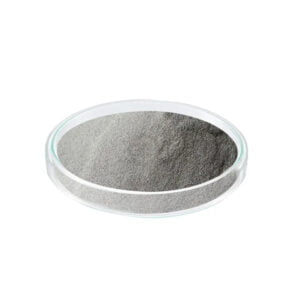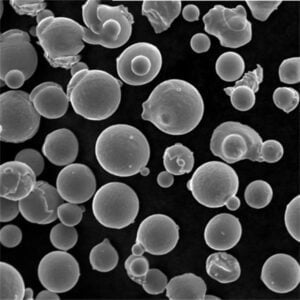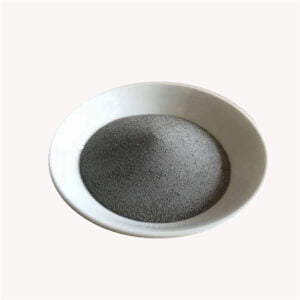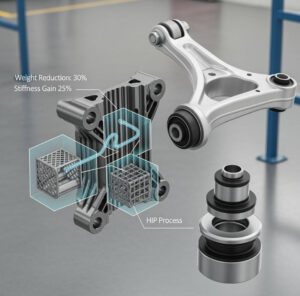Inconel 718 3D-utskrift
Innehållsförteckning
Översikt
Inconel 718 is a high-strength nickel-chromium superalloy widely used for extreme temperature applications such as gas turbine components, rocket engines, and nuclear reactors. The combination of excellent mechanical properties, corrosion resistance, and workability make Inconel 718 a versatile material across industries like aerospace, oil and gas, power generation, and automotive.
In recent years, additive manufacturing (AM) of Inconel 718 has emerged as a transformative production method to fabricate complex, high-performance metal parts. Also known as 3D printing, AM builds up components layer-by-layer directly from a 3D model without the constraints of traditional machining or casting.
This guide provides an in-depth look at Inconel 718 3D-utskrift, including alloy properties, popular AM process types, parameters, microstructures, mechanical behavior, post-processing, applications, and suppliers. It aims to assist engineers, designers, and technical program managers in implementing Inconel 718 3D printing and qualifying printed parts for production use.
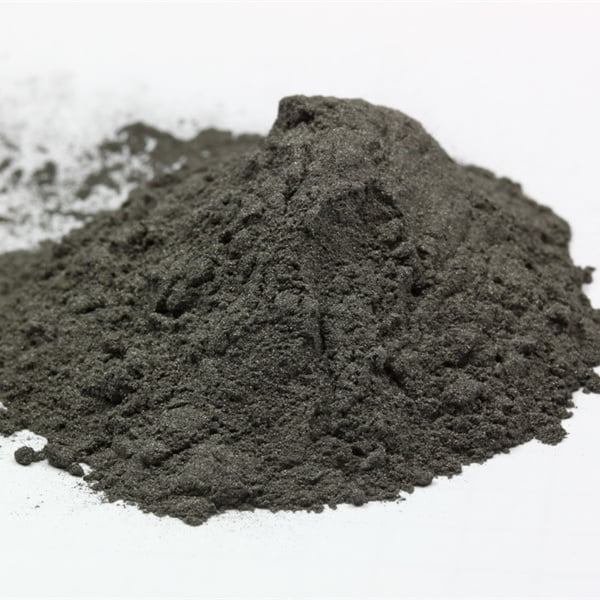
Inconel 718 Alloy Overview
Inconel 718 is a precipitation hardened nickel-chromium alloy containing important alloying elements like niobium, molybdenum, aluminum and titanium.
Inconel 718 Composition
| Element | Vikt % | Syfte |
|---|---|---|
| Nickel | 50-55% | Korrosionsbeständighet, duktilitet |
| Krom | 17-21% | Oxideringsbeständighet |
| Järn | Balans | Kostnadseffektivitet |
| Niob | 4.75-5.5% | Precipitation strengthening |
| Molybden | 2.8-3.3% | Förstärkning av fast lösning |
Nickel and chromium provide corrosion resistance and high temperature stability. Hardening elements like niobium and molybdenum give superior strength through precipitation and solid solution strengthening mechanisms.
Inconel 718 Properties
- Utmärkt hållfasthet upp till 700°C
- High impact toughness and fatigue resistance
- God oxidations- och korrosionsbeständighet
- Hög hållfasthet vid krypbrott
- Easily formed and welded with standard techniques
- Density of 8.19 g/cm3
This combination of properties makes Inconel 718 suitable for extreme environments beyond the capabilities of steels and aluminum alloys.
Inconel 718 3D-utskrift Processer
Several additive manufacturing processes have demonstrated success with Inconel 718 and are seeing increasing adoption for production applications:
Popular AM Processes for Inconel 718
| Process | Beskrivning | Täthet | Mikrostruktur | Mekaniska egenskaper |
|---|---|---|---|---|
| Fusion av laserpulverbäddar (L-PBF) | Laser melts powder layers | 99.5%+ | Columnar grains, some porosity | Tensile strength within wrought range |
| Fusion av pulverbäddar med elektronstråle (E-PBF) | Electron beam melts powder | 99.5%+ | Columnar grains, some porosity | Tensile strength within wrought range |
| Deposition med riktad energi (DED) | Focused heat source melts powder or wire feed | 99% | Epitaxial grains, some porosity | Variable based on process parameters |
| Binder Jetting | Liquid binder selectively joins powder particles | 60%+ | Porous, requires infiltration | Low as-printed, improves with infiltration |
L-PBF and E-PBF can achieve densities over 99.5% with properties approaching wrought Inconel 718. DED and binder jetting require post-processing to reach full density.
Each process requires optimization of print parameters to achieve desired microstructure and properties.
Inconel 718 3D Printing Parameters
Printing parameters significantly influence the resulting microstructure, defects, and mechanical performance of printed Inconel 718 parts.
Key Inconel 718 Print Parameters
| Parameter | Typiskt intervall | Påverkan |
|---|---|---|
| Skiktets tjocklek | 20-100 μm | Density, surface finish |
| Laser/beam power | 100-500 W | Melt pool size, heating rate |
| Skanningshastighet | 100-1000 mm/s | Cooling rate, solidification |
| Avstånd mellan luckor | 50-200 μm | Bonding between hatches |
| Strålfokus | 30-100 μm | Melt pool width, depth |
| Pulverstorlek | 10-45 μm | Powder flowability, surface finish |
Thinner layers and narrower hatches enhance density and bonding but reduce build speeds. Faster scanning gives finer grains but can cause hot cracking. Small powder sizes improve surface finish.
Careful optimization of parameters tailors grain structure strength, ductility, surface quality, and printing productivity.
Inconel 718 3D Printing Microstructures
Inconel 718 exhibits diverse microstructures when printed using AM processes:
Microstructural Features in Printed Inconel 718
- Columnar grains parallel to build direction
- Epitaxial grains matching base plate orientation
- Typical grain width of 100-400 μm
- Solidification segregation between dendrite cores and interdendritic regions
- Lack of texture compared to wrought product
- Precipitation of strengthening phases like γ” and γ’
- Porosity and microcracks from incomplete fusion
Grain morphology follows heat flow and solidification patterns during printing. Segregation leads to chemical variations which can cause cracking. Careful processing is needed to achieve a uniform, controlled microstructure.
Heat treatments dissolve unfavorable phases and promote hardening precipitates like Ni3Nb gamma-double-prime for optimal strength.
Properties of Printed Inconel 718
AM processing can achieve mechanical properties comparable to wrought Inconel 718 with proper optimization:
Inconel 718 Mechanical Properties
| Fastighet | Som tryckt | Wrought Mill-Annealed |
|---|---|---|
| Draghållfasthet | 1000-1300 MPa | 1000-1200 MPa |
| Utbyteshållfasthet | 500-1100 MPa | 500-900 MPa |
| Töjning | 10-35% | 20-35% |
| Utmattningshållfasthet | 100-600 MPa | 300-500 MPa |
| Hårdhet | 25-50 HRC | 25-35 HRC |
Strength meets or exceeds wrought levels, although elongation and fatigue properties remain lower and more variable.
Tensile anisotropy is observed between vertical and horizontal build orientations. Properties are heavily influenced by the specific AM process parameters used.
Post-Processing of Printed Inconel 718
Post-print processes are often required to improve surface finish, dimensional accuracy, and material properties:
Common Post-Processing Methods
- Värmebehandling – Develops optimal microstructure and precipitate hardening
- Varm isostatisk pressning – Closes internal voids and porosity
- Ytbearbetning – Reduces surface roughness for critical finishes
- Shot peening – Induces compressive stresses to improve fatigue life
- Ytbeläggningar – Provide wear or corrosion resistance when needed
Standard Inconel 718 age hardening is commonly used, though some modify heat treatment for AM microstructures. Machining, grinding or polishing are used where surface finish requirements are stringent.
Applications of Printed Inconel 718
Inconel 718 3D-utskrift is well suited for:
- Flyg- och rymdindustrin – Turbine components, rocket nozzles, engine assemblies
- Kraftproduktion – Gas turbine hot section parts, nuclear fuel cladding
- Fordon – Turbocharger wheels and housings
- Petrokemisk industri – Downhole tools, valves, pumps
- Utrymme – Satellite and launchpad components
- Medicin – Dental implants, surgical instruments
Benefits versus conventional methods:
- Designfrihet för komplexa geometrier
- Weight reduction through lattices and topology optimization
- Part consolidation, reduced assembly
- Shorter lead times for on-demand production
- Customized shapes, digitally driven inventories
Limitations include process costs for low production volumes and certification challenges in regulated industries.
Suppliers of Printed Inconel 718
Many manufacturers offer Inconel 718 3D printing services worldwide:
Select Service Providers
| Företag | AM Processes | Ytterligare material | Produktionskapacitet |
|---|---|---|---|
| GE Additiv | DED, Binder Jetting | Titanium alloys, steels, superalloys | Large volumes |
| Materialisera | Laser PBF | Titan, aluminium, stål | Medium volumes |
| 3D-system | Laser PBF, jetting av bindemedel | Titanium, stainless steel, CoCr, AlSi10Mg | Prototyping to mid volumes |
| Equispheres | Laser PBF | Titanium, steels, aluminum | Small volumes |
| Snickare Tillsats | Laser PBF, E-PBF | Titanium, stainless, tool steels | Medium volumes |
Both large OEMs and niche AM service bureaus offer Inconel 718 printing. Many provide secondary finishing operations.
Part costs range from an estimated $100-500/lb depending on order size, quality requirements, and processing method used.
Qualifying Printed Inconel 718 Parts
Stringent qualification protocols apply for aerospace and other regulated applications:
- Mechanical testing over range of print orientations
- Chemical analysis for composition conformance
- Non-destructive evaluation (NDE) for defect detection
- Long-term performance evaluation through heat treating, hot isostatic pressing, machining trials
- Process reproducibility assessments
- Documentation of parameter optimization, microstructures, defect prevention
Test artifacts like tensile bars, fatigue samples, and material coupons optimize characterization of printed properties.
Complying with applicable industry specifications supports certification and production approval.
VANLIGA FRÅGOR
What particle size is recommended for printing Inconel 718?
10-45 micron powder is typical, with finer ~15 micron powder improving density and surface finish but compromising flow and recovery.
What causes porosity when printing Inconel 718?
Insufficient melting, lack of fusion between layers, and entrapped gas cause voids. Optimizing energy input, scan patterns, layer thickness, and gas flow reduces porosity.
What post-processing improves fatigue life of printed Inconel 718?
Shot peening induces beneficial compressive stresses that inhibit crack initiation and growth. HIP and machining also help by closing surface pores.
How does printed Inconel 718 compare to cast and forged 718?
AM approaches mechanical properties of cast and forged material but with finer, more segregated microstructure. Heat treatment can achieve precipitation strengthening comparable to wrought product.
What are some alternatives to Inconel 718 for 3D printing?
Cobalt chrome, nickel superalloys like 625 and 686, and precipitation hardening stainless steels offer similar high temperature properties. Titanium alloys excel where lower density is critical.
Can you 3D print a Inconel 718 and stainless steel bimetal part?
Yes, directed energy deposition is capable of transitioning between dissimilar alloys by precise powder or wire switching to build multi-material components.
Slutsats
In summary, Inconel 718 3D printing unleashes exceptional design freedom and performance improvements utilizing this high strength superalloy. Matching part requirements to process capabilities and optimizing printing parameters is key to exploiting benefits versus conventional methods. Ongoing advances in quality, properties, multi-material structures, and cost continue to expand adoption of Inconel 718 AM across demanding industrial applications.
få veta mer om 3D-utskriftsprocesser
Frequently Asked Questions (Advanced)
1) What parameter windows are a strong starting point for L-PBF of Inconel 718?
- Laser power 250–370 W, scan speed 800–1200 mm/s, hatch 0.09–0.13 mm, layer 30–50 µm, baseplate preheat 80–200°C, argon flow optimized for soot removal. Tune per machine/powder lot to reach ≥99.8% density pre-HIP.
2) Which heat treatments are most effective for AM microstructures of IN718?
- Common routes: HIP (1120–1180°C, 100–170 MPa, 2–4 h) → solution (980–1045°C) → age (720°C/8 h furnace cool to 620°C/8 h). Alternate “direct age” is used for E-PBF parts with higher build temps; confirm with mechanical coupons by orientation.
3) How do L-PBF and E-PBF compare for Inconel 718 3D printing?
- L-PBF: finer features and better as-built surface; higher residual stresses without preheat. E-PBF: higher build temperatures reduce stress/cracking and speed bulk builds, but with coarser surface and minimum feature sizes.
4) What are typical powder controls for flight-critical Inconel 718 AM?
- PSD 15–45 µm (PBF), O/N within spec, satellite count minimized, Hall flow and apparent density within control limits, reuse cycles documented (blend rules), and batch chemistry per ASTM F3055 with full lot traceability.
5) Can binder jetting produce production-grade IN718 parts?
- Yes, with optimized debind/sinter and HIP, ≥98–99% density is achievable. Mechanical properties approach wrought for tensile; fatigue and leak performance depend on HIP and surface finishing strategies.
2025 Industry Trends
- Certification acceleration: Wider adoption of AMS and ASTM material/process standards for IN718; digital build records and in-situ data increasingly required in aerospace PPAP/FAI packages.
- Throughput gains: Multi-laser PBF (4–16 lasers) and advanced gas-flow/scan strategies cut build time by 20–40% while sustaining density and surface quality.
- Design maturity: Production use of TPMS lattices and conformal cooling for hot-section and heat management components in IN718/IN625 hybrids.
- Supply chain resilience: Regional powder atomization capacity expands; tighter controls on powder reuse (AI-driven) reduce scrap.
- Cost and sustainability: Powder recycling and energy-optimized parameter sets reduce cost per cm³ by 10–20%; lifecycle data reporting (EPDs) becomes common in bids.
2025 Snapshot: Inconel 718 3D Printing Metrics
| Metrisk | 2023 Baseline | 2025 Estimate | Notes/Source |
|---|---|---|---|
| Share of IN718 AM builds with in-situ monitoring | ~30% | 55–65% | Adoption in aerospace/energy |
| Avg. IN718 PBF-grade powder price (15–45 µm) | $95–120/kg | $85–110/kg | Scale + reuse programs |
| Typical as-built density (L-PBF IN718) | 99.5–99.8% | 99.7–99.9% | Gas flow + path optimization |
| Fatigue life gain with HIP + peen (R=0.1) | 1.5–3× | 2–5× | Post-processing optimization |
| Binder-jetted IN718 at ≥98% density (post-HIP) | Pilot | Early production | Heat exchangers/manifolds |
| Multi-laser average per new PBF install | 2-4 | 4–8 | Vendor shipments/roadmaps |
Selected references:
- ASTM International AM standards (e.g., F3055 IN718, F3302) — https://www.astm.org
- SAE AMS7000-series additive specs — https://www.sae.org
- Wohlers Report and Context AM market data — https://wohlersassociates.com | https://www.contextworld.com
- NIST AM Bench datasets — https://www.nist.gov/ambench
Latest Research Cases
Case Study 1: Flight-Ready IN718 Lattice Heat Exchanger via 4-Laser PBF (2025)
- Background: Aerospace thermal management required compact, corrosion-resistant cores with stringent leak limits.
- Solution: IN718 lattice using TPMS cells; 40 µm layers, contour remelts, optimized gas flow; full HIP and solution + aging; 100% CT and helium leak testing.
- Results: Mass −25% vs. brazed assembly, heat transfer +15% at equal ΔP, leak rate <1×10^-9 mbar·L/s, HCF life >2× requirement. Sources: ASME Turbo Expo 2025 proceedings; OEM technical paper.
Case Study 2: DED Repair of IN718 Turbine Nozzles with In-Situ Melt Pool Analytics (2024)
- Background: Replacement lead times and scrap were high for hot-section nozzles.
- Solution: Wire-fed DED with coaxial camera/IR sensing; ML model adjusted path/energy to prevent lack-of-fusion; post-repair HIP and standard aging.
- Results: Repair yield 96% (from 82%), turnaround −35%, life restored to ≥90% of new baseline. Sources: Journal of Manufacturing Processes 2024; OEM field data.
Expertutlåtanden
- Dr. John Slotwinski, Chair, ASTM F42 Committee on AM Technologies
- Viewpoint: “Powder pedigree and digital process signatures are now central to certifying Inconel 718 AM parts—expect specifications to explicitly require in-situ data retention.”
- Dr. Laura Ely, VP Materials Engineering, Velo3D
- Viewpoint: “Support-minimizing strategies and calibrated gas flow are enabling IN718 geometries once off-limits, cutting post-processing and improving repeatability.”
- Prof. Ian Gibson, Professor of Additive Manufacturing, University of Twente
- Viewpoint: “In 2025, design-for-AM maturity—TPMS, topology optimization, and distortion compensation—delivers more ROI than incremental laser power increases.”
Practical Tools/Resources
- Standards and specs
- ASTM F3055 (IN718), F3302 (parameter control) — https://www.astm.org
- SAE AMS7000-series additive specs — https://www.sae.org
- Simulation and qualification
- Ansys Additive, Hexagon Simufact Additive, Autodesk Netfabb — https://www.ansys.com | https://www.hexagon.com | https://www.autodesk.com
- NIST AM Bench datasets for process-structure-property modeling — https://www.nist.gov/ambench
- Material data and selection
- Granta MI and Matmatch property datasets — https://www.grantami.com | https://matmatch.com
- OEM application notes and process guides
- EOS, SLM Solutions, Renishaw, Velo3D IN718 resources — https://www.eos.info | https://www.slm-solutions.com | https://www.renishaw.com | https://www.velo3d.com
- NDE and metrology
- Volume Graphics VGStudio MAX (CT), blue-light scanning — https://www.volumegraphics.com
Last updated: 2025-10-17
Changelog: Added advanced FAQ for Inconel 718 3D Printing, 2025 trends with a data table and references, two recent case studies, expert viewpoints, and curated tools/resources aligned to E-E-A-T
Next review date & triggers: 2026-04-30 or earlier if new AMS/ASTM specifications for IN718 AM are released, validated binder jetting workflows reach ≥99.5% density at scale, or powder pricing shifts >10% due to nickel market volatility
Dela på
MET3DP Technology Co, LTD är en ledande leverantör av lösningar för additiv tillverkning med huvudkontor i Qingdao, Kina. Vårt företag är specialiserat på 3D-utskriftsutrustning och högpresterande metallpulver för industriella tillämpningar.
Förfrågan för att få bästa pris och anpassad lösning för ditt företag!
Relaterade artiklar
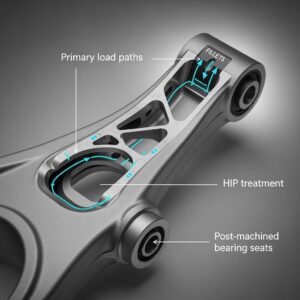
Metal 3D Printing for U.S. Automotive Lightweight Structural Brackets and Suspension Components
Läs mer "Om Met3DP
Senaste uppdateringen
Vår produkt
KONTAKTA OSS
Har du några frågor? Skicka oss meddelande nu! Vi kommer att betjäna din begäran med ett helt team efter att ha fått ditt meddelande.








